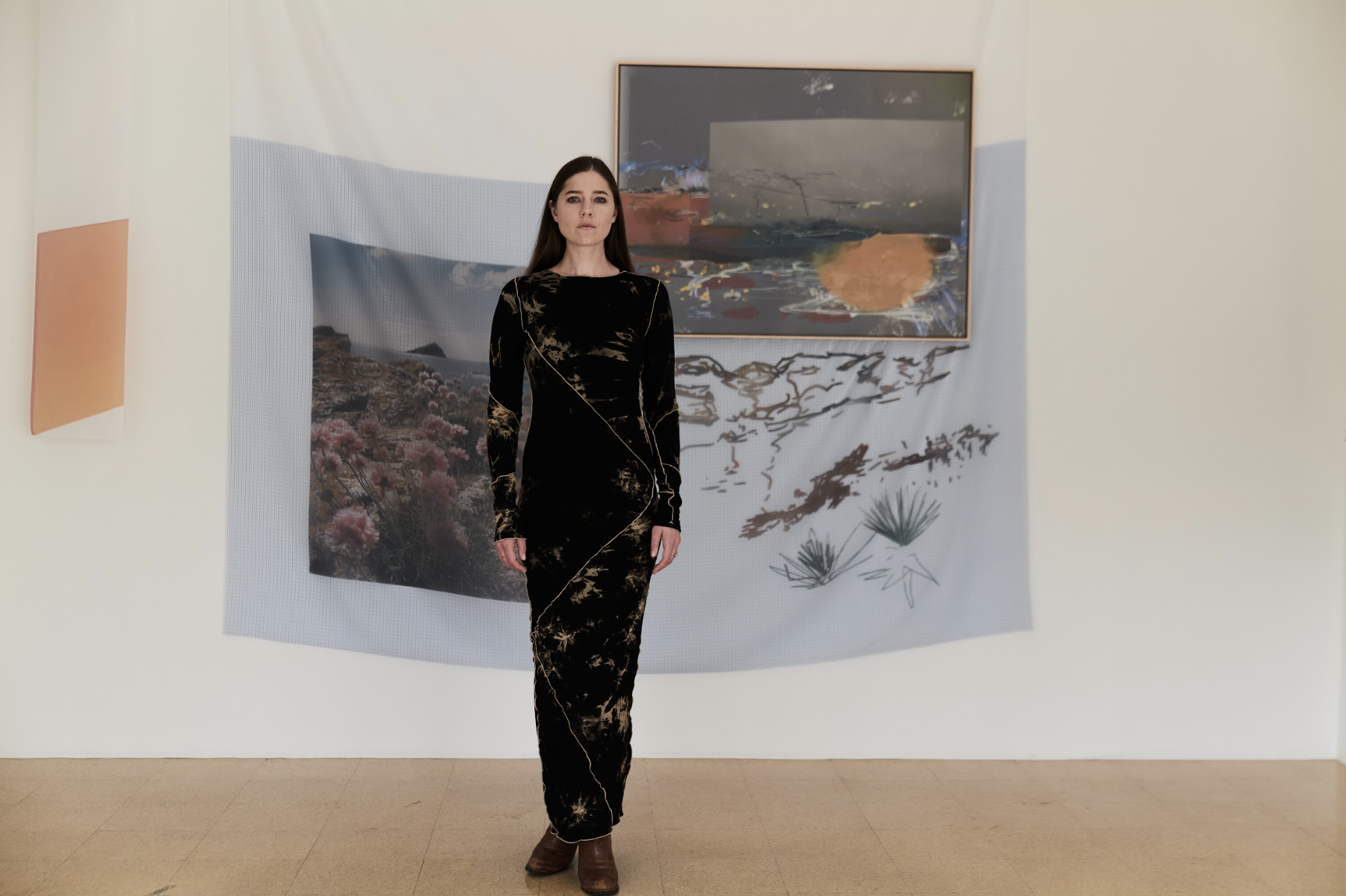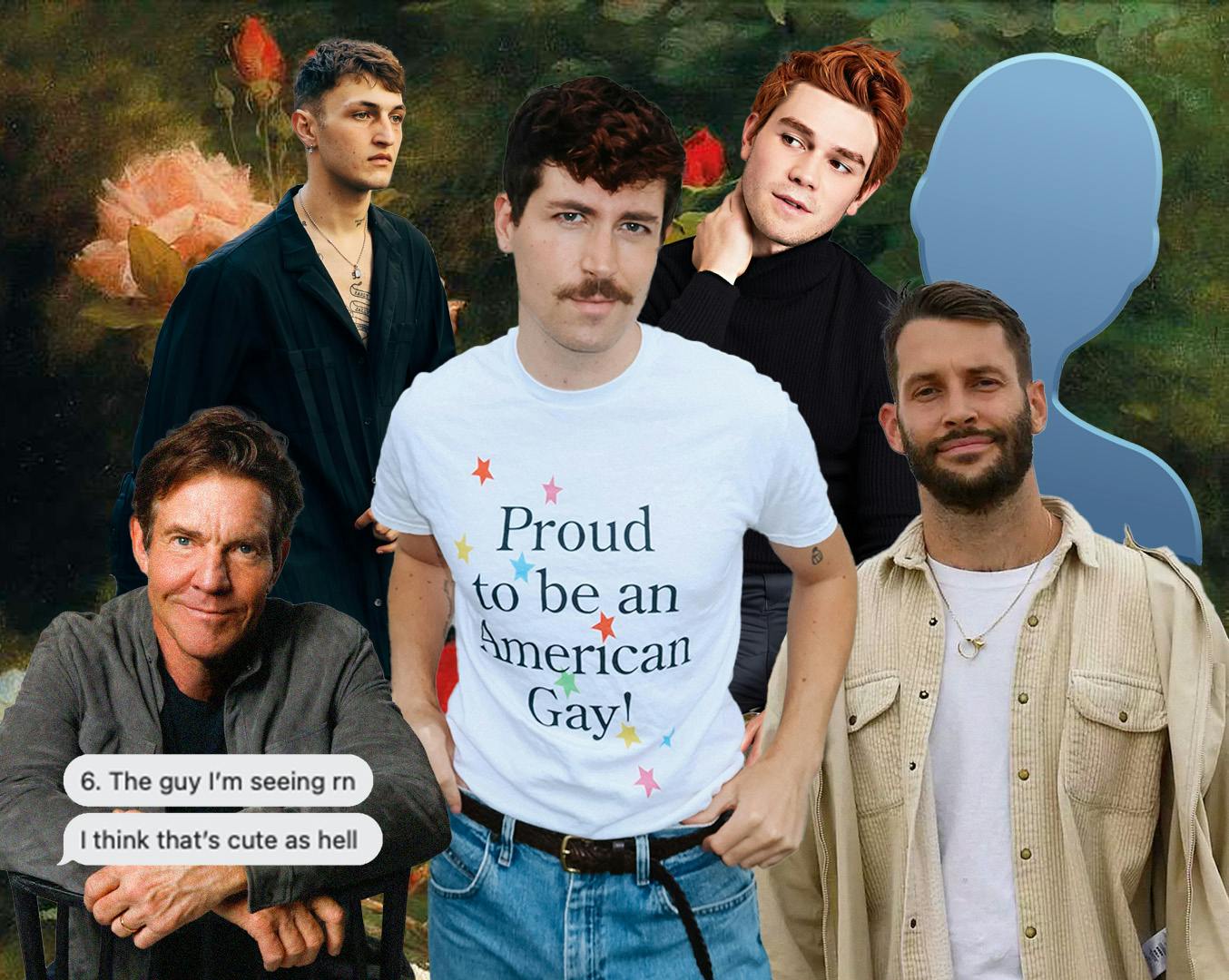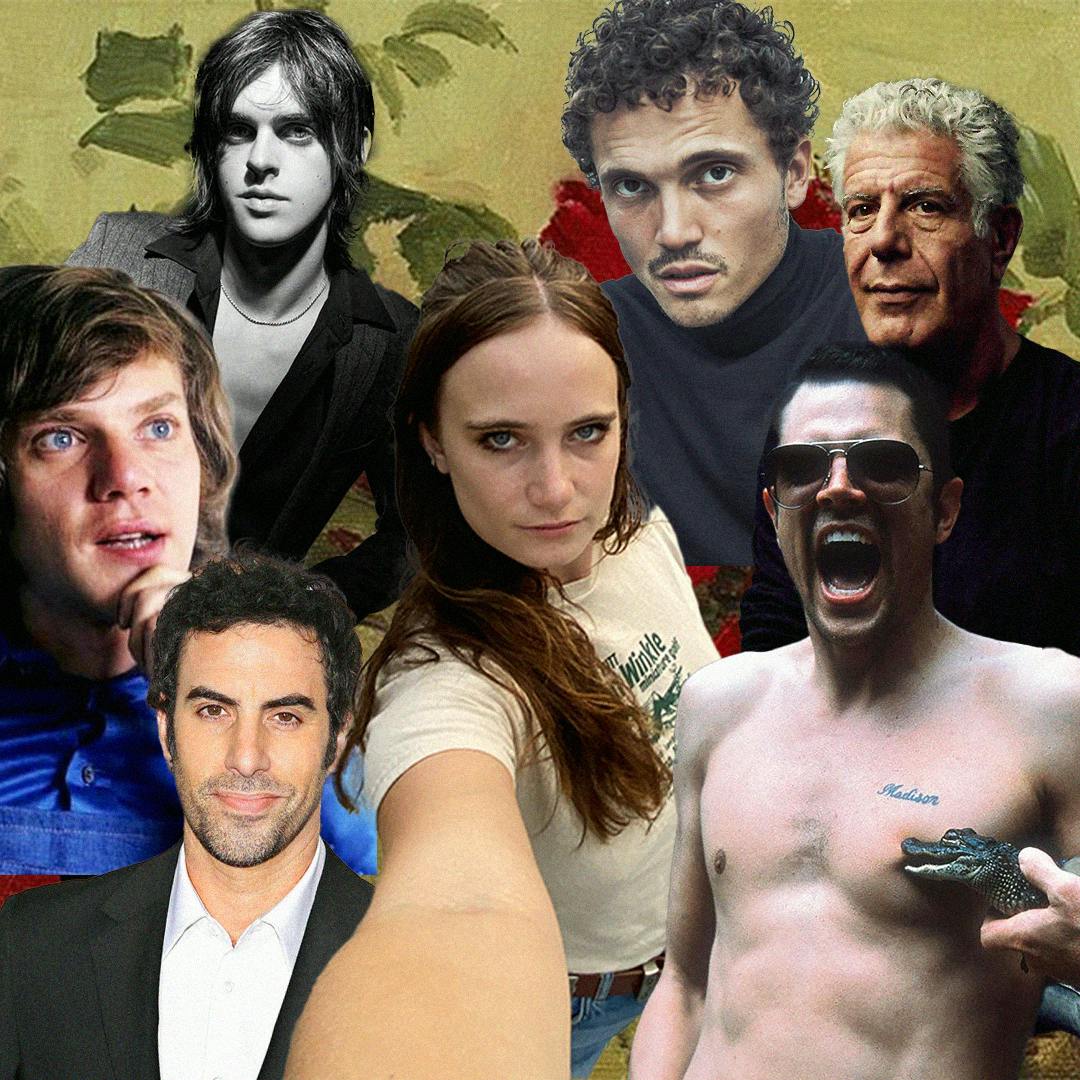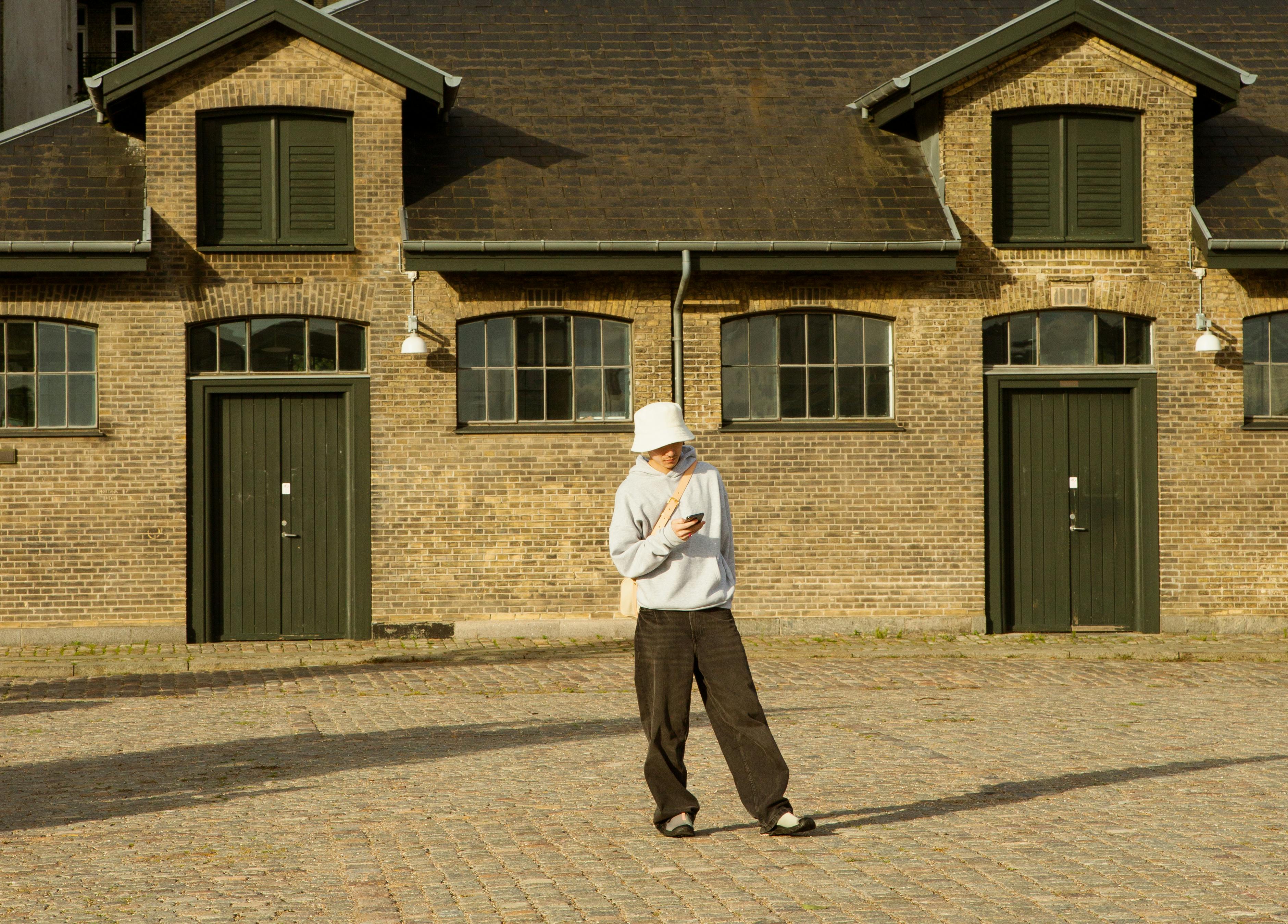
E-Girl Wisdom: Petra Cortright Has Her Hand On The Pulse
On making the internet work for her, making money, and making what she likes, too.
By Thomas J. Stanton
Photos by Stefan Simchowitz
Published
Artist In Residence is a monthly featured artist. Each month, we profile an artist who creates original artwork for Byline's homepage. Just as we seek to give writers a byline, we seek to give artists space.
There is such a thing as caring and not caring at the same time. Artist Petra Cortright knows that. Cortright makes weirdly beautiful videos and digital paintings without overthinking them, all while keeping a comfortable remove from the art world in which much of her work ends up. “There is the art, the art world, and the art market,” she tells me. “I see these as separate things.”
Cortright is an artist of spontaneous discovery who seems unaffected by self-doubt. She repeatedly messes with age-old institutional depictions like landscapes and portraits in a way that creates depth in a flat medium. Her video manipulations are often crude and glitchy and anything pure also contains an element of lingering chaos. As a matter of mindset, she does not push an agenda with her art nor engage with it in an overly conceptual way. “I don’t think the function of art is to tell people what to think,” she explains. “I think it’s more about asking open-ended questions.”
If the art world, or maybe the art market, is a competition, Cortright occupies a rarefied spot as a full-time artist, though this merit seems to make her a bit uncomfortable. “I almost feel guilty about it,” she says, “because there are so many people who aren’t given a chance. But I’ve always been a full-time artist; it was just the difference between making a living and living with my mom. I’m always complaining about the art world, but I’m one of those people who can’t really function in other settings, and [the art world] harbors a lot of those people, and so there’s a real purpose for it in that sense.”
Cortright and I spoke over Zoom, from one end of Los Angeles to the other, a sea of freeways in between. “I always feel weird talking over Zoom with people in the same city,” says Cortright. “I have friends who moved [to Los Angeles] and I would see them more in Berlin or in New York than I would in L.A. It’s a very isolating place.”
Cortright says she mostly appreciates this isolation though. “I think it’s fine. I’m from Santa Barbara [California], and you just kind of do your own little bubble world in L.A. It’s spread out. It’s a different layout. I’ve made peace with it. I have a kid so it’s just a completely different schedule anyways. I’m not trying to hang out.”

In 2016, Cortright and her family moved to a house near the foothills of the San Gabriel Valley, a low set of mountain ranges that presses up against the L.A. suburbs. “We’re not at the point where we get bears,” she says, “but we have friends that live about ten minutes from here and they get bears in their backyard. There is a little more weather here, by California standards.”
Cortright’s family, on her mother’s side, is from Montana and she visits the state often, venturing even further away from art world hubs. “I love it, it’s very beautiful.” She hesitates to say that she could go completely off grid though. “I am such a California person, whether I want to admit it or not. There’s sunshine every day.”
Cortright works out of a studio in their house; a space anchored by two large computer screens with a pair of desktop computers. “I’m more of a PC person,” she says. Laptops and tech miscellany are strewn around the room. It’s with these tools that Cortright makes her videos and layered paintings, starting with what she calls an “environment” of digital elements and then layering it with “weather” using a database of thousands of her own brush strokes and various scripts.
On a good day, Cortright makes between 20 and 50 paintings. “It’s not always like that. Sometimes I’ll go in and take one from years ago apart and work with it. Technically, it’s months and days. I’m just pulling from so many different things all the time.” In this way, Cortright’s pieces are always evolving; she layers and edits and quirks them until a work is eventually printed and set on a wall.

Cortright’s urge for discovering and making things with salvaged, low-res images is more emblematic of the comparatively spacious and chaotic internet of ten or fifteen years ago, before everything became consolidated into just a handful of high-traffic platforms and websites. She has been experimenting with certain sets of tech tools and archetypes like filters and effects and the tangle of online personas, long before these things became second languages to anyone with a smartphone.
Her newest work, which she describes as “ambient landscape videos,” feels otherworldly. Snow covered vistas mix with tropical gardens. The viewer is drawn inside the scene, like being digested by a screensaver or falling down a metaverse wormhole. Cortright’s videos dropped me into a pleasant daydream as we discussed creative instincts, emoticon superiority and the importance of ample parking at L.A. art openings, below.
Thomas: Can you tell me a little about the videos you did for Byline?
Petra: Yeah, sure. I’m basically a landscape artist at this point. It’s definitely the subject matter I feel like I can work on my entire life. I go in and out of being really interested in Western [U.S.] landscapes, like in California or Montana, [the area] west of the Rocky Mountains; sort of the landscape that shaped my life. The videos are a bit more surrealist, more like dreamlike landscapes. They’re textured with a bit of contrast, like a weird infinity pool. I like to make work where you don’t need an explanation or an entire essay to understand it. I reject that sort of art; it’s tedious.

Thomas: Do you visit a lot of galleries and art shows around Los Angeles?
Petra: No, not really. I don’t mind going to the Norton Simon [Museum]. It’s very relaxing. But going to galleries; it’s such a hostile situation most of the time. People are so rude and parking usually sucks. Especially in L.A., I feel like you need to be extra nice to someone if they show up [because they’ve made the trip]. I’ll show up for friends. I’ll decide to go somewhere if I know there’s parking; it’s a real contributing factor to making the decision to go. I have a funny relationship with museums. Sometimes I never know where I stand in the art world. The background I come from: the internet artists, the net artists, post internet, all the fucking words that have been used to describe this genre of work [I’m in] have been very outside of the world of art. I’ve always felt outside of things.
Thomas: I feel like you have really good instincts. Are instincts a big part of your practice?
Petra: I try and listen to my inner compass. For years and years, I would only make things I wanted to make with one hundred percent passion. That becomes problematic after awhile, if you just need to get some stuff done. I always try and listen to [my] internal compass though and just work on what feels exciting and fun and also make things a little before they’re even specifically for something. I used to have kind of a problem with that; just even the pressure of knowing something was going to go somewhere. Probably the best things I’ve ever made have been for no reason. There’s been no point to it. It has this built-in sincerity and honesty and purity. Not to be too evangelical about it or anything. Some people can handle a lot of pressure. I can handle a little more now [than I used to] but it’s not ideal for me, because it’s just not that fun, and if it’s not fun, then what’s the point?
Thomas: It’s good instincts, and you seem to be ahead of a lot of things. You were riffing on these things like emoticons and filters way ahead of when these things became commonplace. And you also have this instinct for getting out of an an area when it gets too saturated.
Petra: Thank you for saying emoticon and not emojis. I suffered through a lot of puff pieces saying things like, ‘this web darling uses emojis.’ It’s such a big difference to me. It’s nerdy and technical, but it’s a big difference to me. Emojis are a phone-based feature that are available to choose from in a limited amount; what Apple allows you. Emoticons, like the ones on my website, that’s stuff that I hunted for on the internet. There are thousands of those. There aren’t thousands of emojis.
Thomas: Yeah, that’s true. It’s the feeling you get from being able to search and play with an entire world. Like there are no limitations.
Petra: It’s not that big of a deal if people mix up the words, but it is the philosophy of it, you know? I can be a bit of a punk trickster. And yeah, if something starts catching on and gets really popular, and I’ve already exhausted that body of work, I’m totally ready to move on.
Thomas: Do you think it’s possible to make cool and weird stuff and still make money?
Petra: Yeah, I’m really lucky. The galleries that I work with and stuff, mostly they just let me do what I want. I have a pretty good situation with that. For making money in art; making physical work, and especially making physical paintings is still the most realistic way of making money. I have a strong video background, but it’s not like I bought my house with video art sales [laughs]. It’s about making something that hangs on the wall that someone can hang in their house. I try to be really transparent about stuff like that. It’s very unclear to a lot of young artists how you even go about doing anything, and they don’t teach any of this stuff in art school. For anyone who doesn’t come from money, a lot of this stuff is unclear. I feel for young people now. Looking back to when I started doing stuff on the internet, there was so much space, and now I feel like there’s so much noise. I feel like it’s hard for people who are, and this sounds corny, trying to find their voice.
Thomas: Yeah, definitely true. I feel like your Instagram has a lot of engagement or whatever though.
Petra: Kind of. I just feel like a dinosaur on social media. I especially loathe Instagram. I put up with it, but I don’t heavily engage with it. I’m a big Twitter person. I have a lot of schizo energy on Twitter. It’s great, because for a visual artist, I feel like there’s no pressure for me on Twitter. I feel like writers have a very hard time on Twitter because that’s their realm; writing. It’s somehow not as fun when you’re in your realm. I feel like I can’t really be too prolific on Instagram. I keep it functional. It’s a very calm representation of [my] work. Twitter is for day-to-day bullshit stuff.
Thomas: Does your media in-take feed your art practice? Like mood board stuff?
Petra: Yeah, I have folders and folders of stuff. I’m actually using those images in my own work. For any of the photoshop paintings, I’m taking so many images from the internet. If I see a painting I like, I’m using it in my painting. The source images are cut up and manipulated. It’s like an environment. And then there are layers that are almost like weather; these veils of color. It’s not so different from how a traditional painter might work, with underpainting and highlights and shadows. But the only difference is the oils don’t melt together [in my case]. I can make a lot of changes all the time. I can make as many things as I want to, which is really important to me, and later I can go back and edit. It takes the pressure off, so I can make my best work. I can have successes and failures within a thirty minute timespan and it’s all fine.
Thomas: Do you listen to music while you work?
Petra: Yeah. I’m one of those people who listens to the same one or two or three songs over and over again, on repeat, for months until a new thing comes along that I get attached to and then I’ll listen to that over and over again. It’s a little embarrassing. Sometimes it’s just one song, that’s when it’s really bad [laughs].
Thomas: What’s the latest one? If you aren’t too embarrassed to say.
Petra: Sure, not embarrassed about this one: it’s Snow Strippers and there are fourteen songs in this playlist. I’ve been listening to these same songs all the time for a couple weeks straight.
Thomas: Do you think there is any significance to the way you reference art history through portraits and landscapes, but you’re working with these futuristic means, so you’re sort of in this middle space?
Petra: Yeah, I actually love operating in grey areas. I think that most of life is like a grey area. Things aren’t as black and white as people want to tell you that they are. It feels more honest to me. As an artist, I think it’s important for me to honor the past, I guess. But I’m not interested in doing topical work. I just love the idea of continuing on the work of landscapes or self-portraits. Looking back on the webcam videos, I always felt like they were more self-portraits than they were selfies.
Thomas: Your practice all feels very immediate.
Petra: I’m always trying to not think when I make work. I don’t like the feeling of overthinking. I try to avoid it all costs. I try and take action instead of second-guessing. I’ve known a lot of artists who have literally stopped making work because they’ve thought too hard about their practice and their work. It’s a bad trap to fall into and thinking too much about work makes it too easy not to do anything.
Thomas: I can relate. I have a sort of late-Gen X brain worm that sometimes prevents me from putting stuff out there. Like struggling over a fucking photo caption for forty minutes and in the end you just end up burning it all down. It’s analysis paralysis hell.
Petra: [Laughs]. Yeah, my husband [the artist, Marc Horowitz] is Gen X and he has a little bit of that too. These things are sort of generational. You can’t have fear, not in a crazy sense, but more in an ego sense. Years ago, I figured out this trick where I would just tell myself that something was ‘just a test.’ And ninety five percent of the time something good comes out of that. Five percent of the time, you end up with some garbage piece, but it’s fine. You have to be brave and keep engaging in things.
Thomas: Your work experiments a lot with physical transformation. It has a lot of elements of curiosity and spontaneity and a sense of wonder and maybe a little bit of mania, but I mean that in the best possible way.
Petra: [Laughs] With the videos, I was trying to make the most beautiful possible movements for a particular effect. I guess people now would think of the effect as being like a filter or something. I was very curious of how to use it in a weird way but also in a beautiful way. My motivations are always very simple; it’s just to make something beautiful. It’s also selfish; I make these things for myself. I have to make these things. I was making things before I had any money. I was making things after I had money. I’m always going to be making these things. It’s the way I function as a person in this world.
Follow along and learn more about Petra's work, here.



